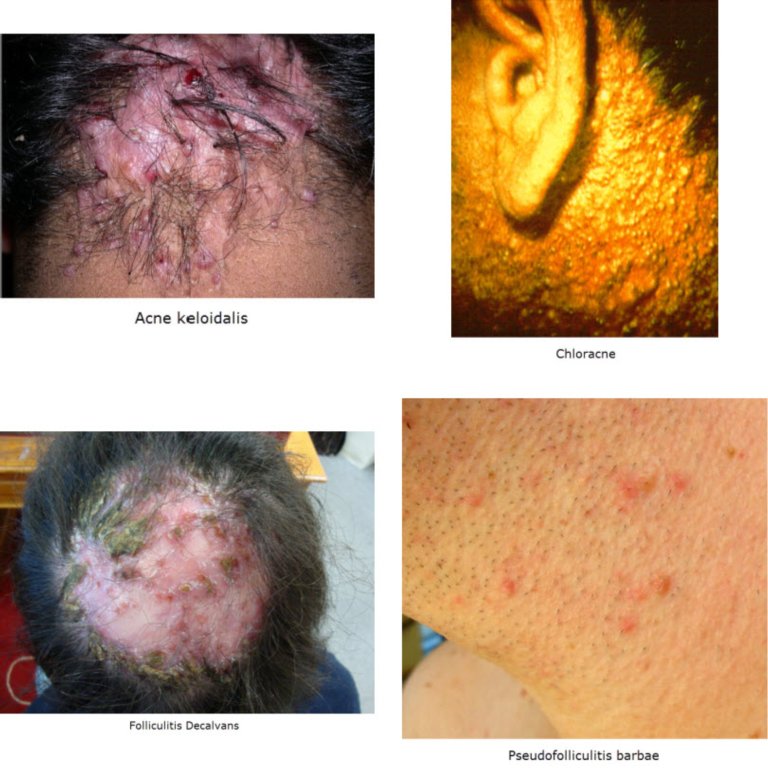

Diagnosis: Acneiform eruption
Description: A composite of clinical images of acneiform pathology
Clinical Features: Pustules
Pathology/Site Features: Face
Sex: M
Age: 23
Submitted By: Ian McColl
Differential DiagnosisHistory:
Chloracne is an unusual condition associated with exposure to chlorinated hydrocarbons. It usually presents as multiple comedones in areas where you don’t expect to see comedones, e.g. the forearms, the neck and the shoulders. Histopathology shows dilated follicular infundibula with multiple comedones and follicular cysts. The degree of inflammation is quite variable. The features may be similar to acne, but sometimes there is an absence of sebaceous glands.
Pseudofolliculitis barbae is due to ingrowing hairs, usually because of a genetic tendency to have curved hairs, particularly seen in African Americans. Granulomas may be seen as a foreign body type reaction with parts of hairs showing transepidermal elimination.
Acne keloidalis isn’t really a variant of acne. It is a type of staph folliculitis, particularly seen around the back of the neck, in African Americans and associated with scarring.
Virtual Slide Histology will show abscesses adjacent to hair follicles. Sometimes there are more plasma cells seen. Ultimately there is dermal fibroplasia and scarring with destruction of hair follicles.
Halogenoderma This is a rare case of a pustular acneiform rash but it can be seen in renal failure when lots of scans are done using iodine and when people takes excessive iodine supplements. Virtual Slide at Path Presenter